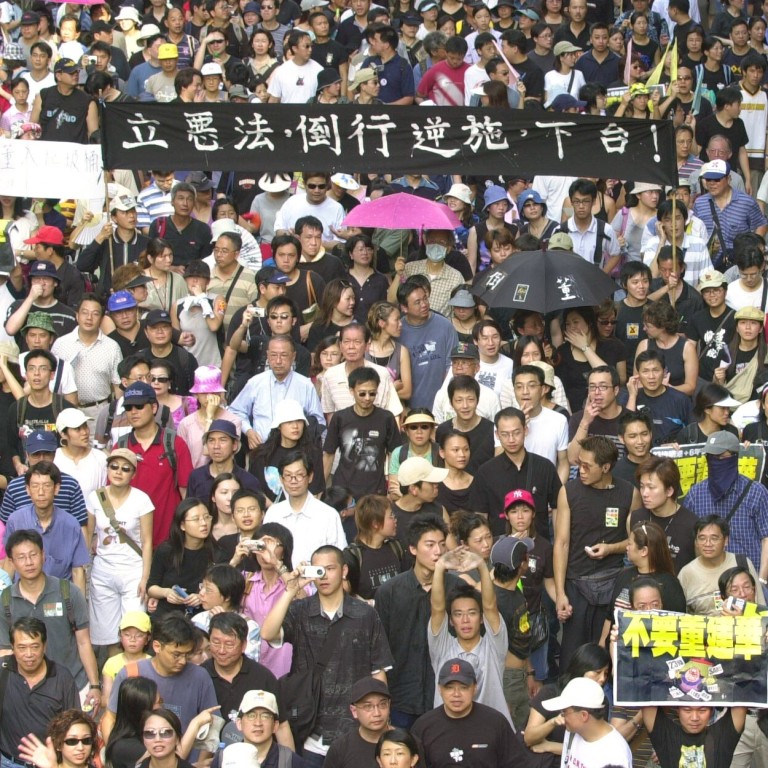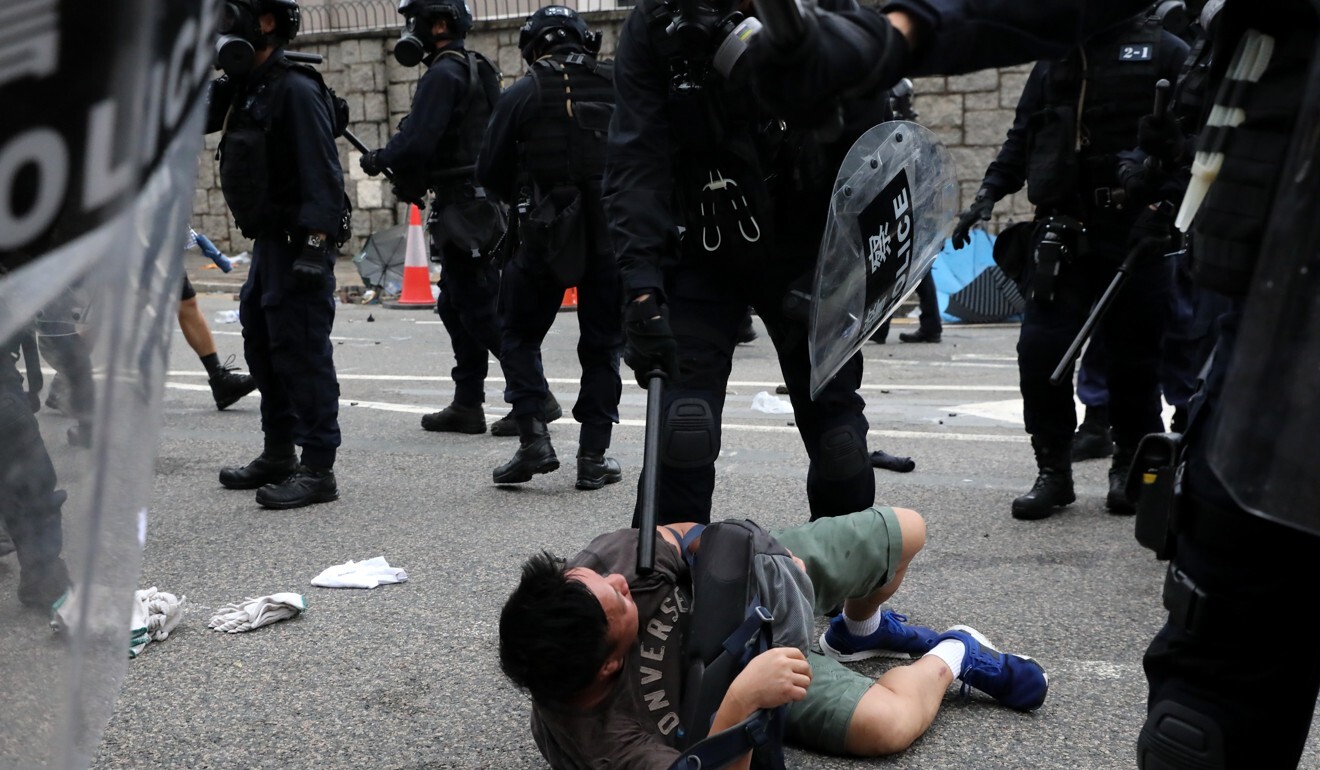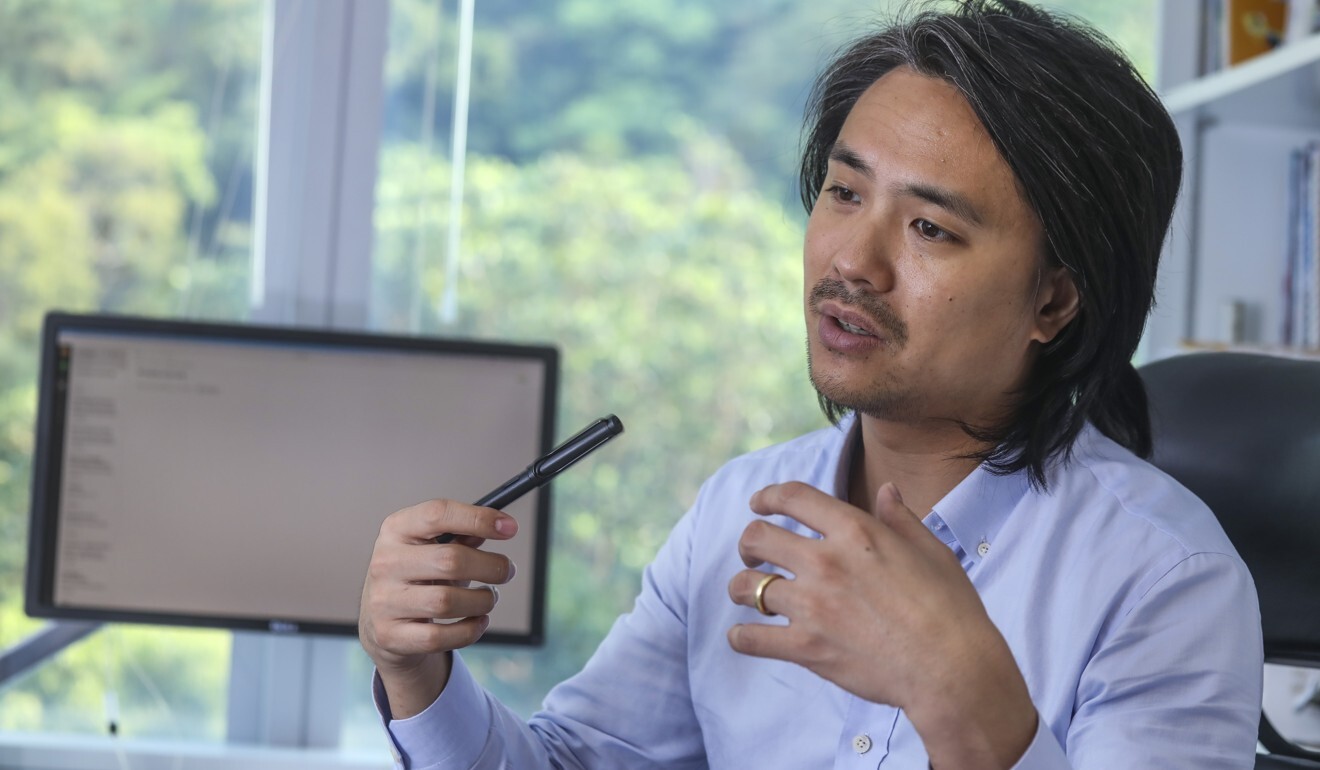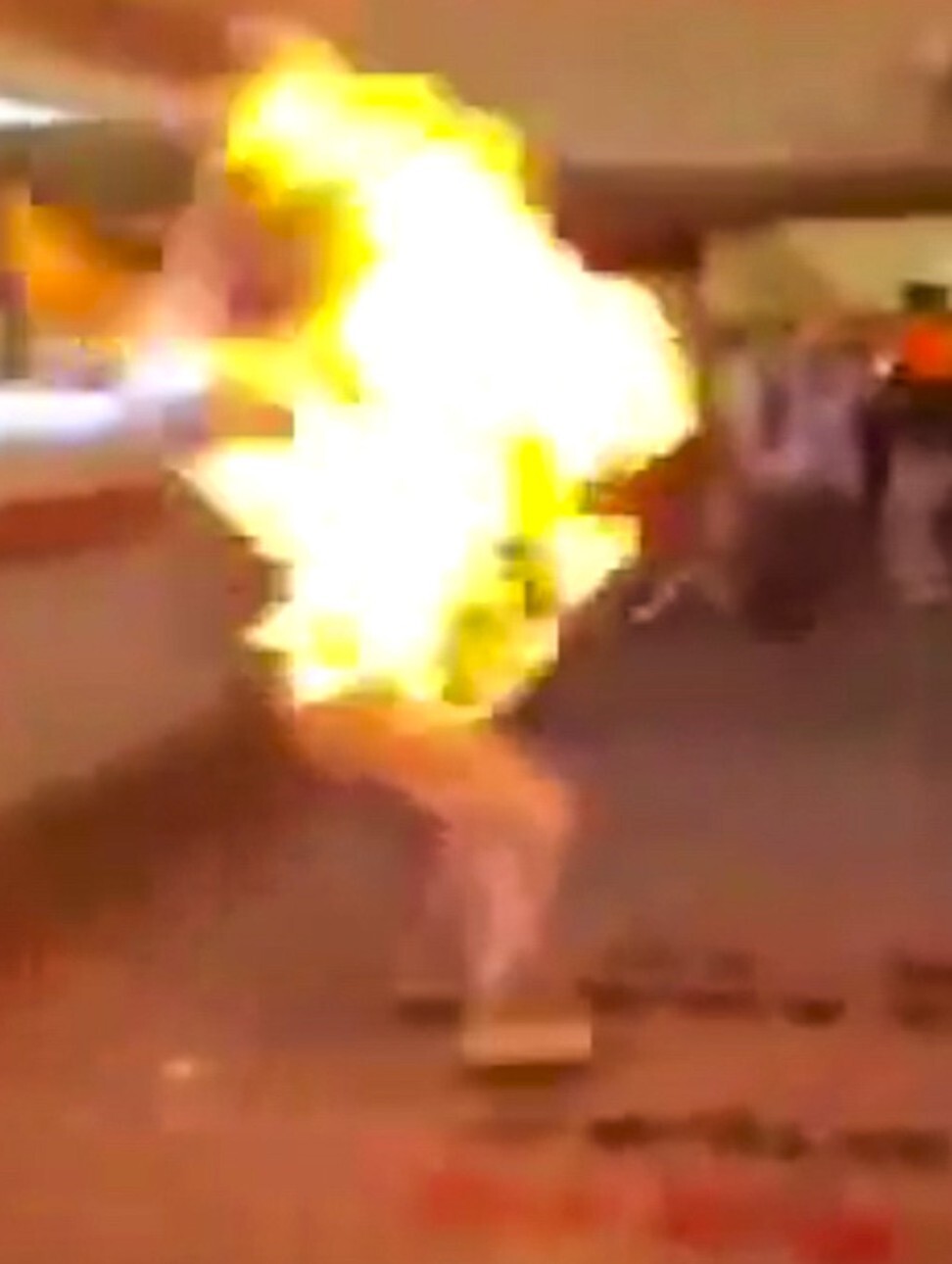
Exclusive | Hong Kong protests: why the mantra of ‘no cutting of ties’ means no one will chide the violent demonstrators
- Hongkongers have become accustomed to the sight of physical fights between police and protesters, the mess and mayhem and the clouds of tear gas fired
- But psychology professor says ‘people are habituating to violence’, while activist says ‘the city needs more people with kind hearts and critical minds’ to change things
Rebel City: Hong Kong’s Year of Water and Fire is a new book of essays by the South China Morning Post chronicling the political confrontation that has gripped the city since June 2019. Edited by the South China Morning Post’s Zuraidah Ibrahim and Jeffie Lam, it draws on the work from the Post’s newsrooms across Hong Kong, Beijing, Washington and Singapore. This weekend and next, we will run excerpts from the 512-page book now available online and at bookstores.
As she dived into the sea of demonstrators, Anna Chan Wah shrugged off the scorching heat, the blaring loudspeakers and, in the pit of her stomach, a gnawing fear of failure.
“We know our street protest today is not going to change anything,” the sixth former said solemnly. “But we are here to fight for democracy in Hong Kong and to show that we still have a voice.”
It was 2003 and Chan was 18 when she joined the half-a-million people who took to the streets to oppose a piece of national security legislation the government had introduced. Chan feared the bill, which was to deal with treason and sedition against Beijing, would curb Hongkongers’ freedoms and rights guaranteed under the “one country, two systems” governing principle.
“We need to show our concern, not just through discussion but action.”
Chan kept her word. Long after the bill was aborted, she continued to attend democracy rallies, first as an undergraduate and then as a secondary-school teacher.
On June 9, 2019, when an estimated 1 million people marched in protest against the extradition bill, which would have allowed fugitives to be tried on the mainland, she was in the crowd. “Hongkongers might seem to care only about money most of the time but they would definitely stand up when their freedoms and core values are eroded,” said Chan, now 34 and mother of an eight-year-old son. “That is the Hongkongers’ spirit. We have not changed.”
The protesters on that day wore white to symbolise the death knell of the city with the passing of the bill. Like Chan in 2003, many admitted feeling pessimistic they could quash the legislation. But they were not giving up without a fight. Protesting was what being a Hongkonger was about, commentators mused aloud in those heady early days. The protest instinct was in city residents’ DNA, others said.
Defending Hong Kong
“Withdraw! Withdraw!” the crowd chanted that day, referring to the bill. That night, they received an answer. The final sentence of a statement issued by the government at 11.09pm read: “The second reading debate on the bill will resume on June 12.”
On June 12, tens of thousands besieged the Legislative Council complex to block lawmakers from scrutinising the bill. Chaos ensued and tear gas was fired, for the first time since the Occupy protests of 2014. It took Chief Executive Carrie Lam Cheng Yuet-ngor another three days, on the eve of another mass march, to declare the bill suspended.
“No one knew whether it was the June 9 march or the June 12 clashes that triggered the backdown, but mainstream society, including the demonstrators, agreed that it was the combination of both peaceful and radical protests that forced the concession,” said political scientist Edmund Cheng Wai, of City University.

But the concession proved to be too little, too late. After police fired 150 rounds of tear gas at the June 12 melee, the target of anger widened to include not just the government, but also the officers who were accused of using excessive force.
A day after the bill’s suspension, an estimated 2 million Hongkongers returned to the streets demanding its complete withdrawal.
In Victoria Park that Sunday, a retiree surnamed Li urged the government to vindicate the students who clashed with police on June 12. “I am just glad no one was killed that day,” the 70-year-old said, her voice breaking and eyes brimming with tears as she recounted a video clip of a protester with his face drenched in blood.
By that weekend, the narrative of police brutality had taken hold.
Protesters doubled down. Inspired by the late Hong Kong martial arts star Bruce Lee’s “be water” strategy, they would stage spontaneous demonstrations that ebbed and flowed without warning.
Civil rights group accuses police of breaking international law after three observers are arrested
Wo lei fei and jung mou united as one
July 1, the 22nd anniversary of the city’s return to Chinese rule, marked a critical juncture for the protests. Thousands of demonstrators skipped the annual peaceful procession and forced their way into the Legco complex after smashing glass entrances with a metal cart and iron poles.
Inside, they vandalised the city’s emblem, trashed the chamber and spray-painted graffiti on walls. A number of pan-democratic lawmakers who had previously stopped protesters from escalating their actions were outflanked and shouted down.
Labour Party lawmaker Fernando Cheung Chiu-hung, who had tried to dissuade a group of young protesters from breaking into the Legco complex at the height of the Occupy protests in 2014, said the change in attitude was stark. The protesters of 2014 preached “peace and love”. The demonstrators of 2019 had no qualms about the use of force, even if it cost them their future or, worse, their lives, he said.

Cheung said news about three unusual deaths around then had been a trigger for the rampage on July 1. The trio had either left suicide notes or other references to the political crisis. “These protesters believed they should be held responsible for the three victims as they had failed to force the government to address their cause,” Cheung said. “They were sad, angry, guilty and in despair.”
That same evening, a hotel front-desker who goes by the initials CC sat in his office canteen transfixed by the live broadcast of protesters’ attempts to smash Legco’s glass doors. Police were nowhere to be seen.
CC sighed and concluded that it was a trap; that law enforcers had deliberately retreated from the legislature, hoping the public would be so shocked by the protesters’ actions it would withdraw its support.
The 30-year-old went home with a heavy heart.
CC made up his mind that night to throw himself fully to the cause. He said he had to ensure the movement could carry on if frontliners were arrested after the night of July 1. A supporter who had considered himself a wo lei fei – a term for peaceful, rational and non-violent protesters – he decided he had to change. He would become one of the jung mou, or the “courageous and fierce ones”.
The next day, CC woke up to find Hongkongers leery of condemning the previous day’s violence. Supporters of the protesters stuck to two key messages purveyed online that would have a talismanic effect on the movement.
First was the pledge of “no mat-cutting” – or bat got zek – which urged protesters to neither blame nor distance themselves from one another despite their different approaches. The second was the precept of “two brothers climbing a mountain, each making his own effort” – meaning different routes to reach the same summit were acceptable.
Almost every weekend after that, increasingly violent clashes between black-clad frontliners and police became the rule rather than the exception.
On July 21, CC was among those who besieged the Beijing liaison office in the western part of Hong Kong Island, pelting it with eggs, splashing black paint on the national emblem and scrawling anti-Beijing expletives on its walls.
Wo lei fei and jung mou demonstrated a rare unity born of the lessons gleaned from the Occupy protests. The endless infighting between the moderate and radical factions of Occupy in the end gutted the movement from inside. The strategy of occupying spaces over long stretches inconvenienced people and drained their goodwill.
Police reputation in tatters across the political divide according to online survey of Hong Kong voters
Remembering these missteps, protesters such as CC were disciplined about adopting short, seemingly random bursts of rampaging to sustain public support and elude any police dragnet.
They also worked hard at cultivating the image of a leaderless movement, so there would be no ringleaders to arrest. The reasoning went that even if influential figures were picked up by police, others could step in. “Occupy is like a mirror – we are actually doing the opposite of what we did five years ago,” CC said.
Broad support
The turn to violence in 2019 should not have come as a surprise, said political scientist Cheng. The Mong Kok riot three years earlier provided a preview. Activists were weary of “old and useless” peaceful tactics, Cheng said, and decided on actions that would exact a higher cost on the authorities.
In 2019, after a few clashes and with an emerging narrative of police violence, many became inured to the sight of physical fights between the two sides, the mess and mayhem and the clouds of tear gas fired.
One argument protesters used to justify their violence was that police were using disproportionate force to take on ill-equipped young people.
Broad swathes of society – the wo lei fei and also middle-class bystanders across the generations – sided with the protesters, becoming the political vitamin sustaining the movement.
CC recalled how some middle-aged residents had cheered for him and his comrades when they were fighting on the streets. “The support from these middle-aged people stemmed from their sympathy toward the youngsters who had gambled away their futures,” he said. “They might not care about democracy at all.”

Few cared to blame the protesters, whether quietly or openly.
But the protesters did fret about their standing. In mid-August, they apologised and promised to reflect on their strategy, after causing massive disruption at the city’s airport, leading to nearly 1,000 suspended flights and thousands of grounded travellers.
On October 4, hours after masked radicals went on a rampage, vandalising shops and banks perceived to be Beijing-friendly in response to a newly introduced mask ban, posts popped up on LIHKG questioning the wisdom of such moves.
Observers said there was a dynamic collective restraint mechanism within the movement, helping to preserve the unity between radicals and peaceful supporters.
Survey of Hong Kong protesters says 80 per cent back ‘one country, two systems’
But that self-restraint had weakened by November. A 57-year-old construction worker who confronted radicals vandalising facilities at Ma On Shan MTR station on November 11 was set on fire.
Human rights activist Johnson Yeung Ching-yin, former convenor of the pro-democracy umbrella group Civil Human Rights Front, believed the weakening self-restraint was also due to hard-core members moving their online discussions to encrypted channels. Where before thousands could vote on their planned actions, now only a few did so. “By October, they had formed their own groups for decision-making and by then no longer had to care about mainstream opinion,” said Yeung, 28.
More “emotionally driven” radicals were also taking to the front lines then, angered by their friends’ arrests or police beatings, Cheng said.
The cost of embracing violence
Clinical psychologist Christian Chan, an associate professor at the University of Hong Kong’s psychology department, said the range of weapons police had seized since the end of 2019 – including home-made bombs and explosives – should have made society worry.
“The fact that there hasn’t been wider concern is very dangerous because it suggests that the norm – or what is generally perceived as acceptable – is shifting. People are habituating to violence,” Chan said.
Pro-democracy lawmakers confessed to facing a similar Catch-22 situation. Democratic Party lawmaker Lam Cheuk-ting alluded to their delicate relationship.
“The hardcores might consider our situation when they mull over their next steps as long as we are in the same boat. We could still exchange views,” he explained. “Once we part ways, they would no longer see us as their allies and would not consider our difficulties any more. It could be even more dangerous.”
Student activist turned teacher Anna Chan said her heart ached each time she saw students risking their future to join the clashes. A year on, the young protesters still believed in a now-or-never chance to fight for their cause. For now, she has made a pledge not to shy away from difficult issues in her classes so that the Hong Kong spirit could endure. “The city needs more people with kind hearts and critical minds so one day they can change the world.”
You can get your copy of Rebel City: Hong Kong’s Year of Water and Fire directly from SCMP and get a 15% discount (regular price HKD$198) or from major bookshops worldwide or at Amazon , Kobo , Google Books , and eBooks.com .














